A short in-person lecture given at the Frontier Energy “2050 Summit Conference”, 24 Nov 2022, organised by Frontier Energy, and sponsored by various energy interests. https://www.frontierenergy.network/energy-2050-summit
Summarised below as notes and slides
Life cannot exist without energy, and it struggles to find enough now,
just as it has ever since life began.
Today’s choice of energy should satisfy criteria from natural science,
economics and the environment.
In this short presentation I construct a score card for the competing
candidates.
By natural science I do not mean technology.
Science tells us whether energy is there at all – if it isn’t, no
technology will find it.
Economics is a major criterion if modern life is to be maintained.
We share the planet with one another and the rest of nature too.
So, the environmental footprint of our energy supply is as important as
science and economics.
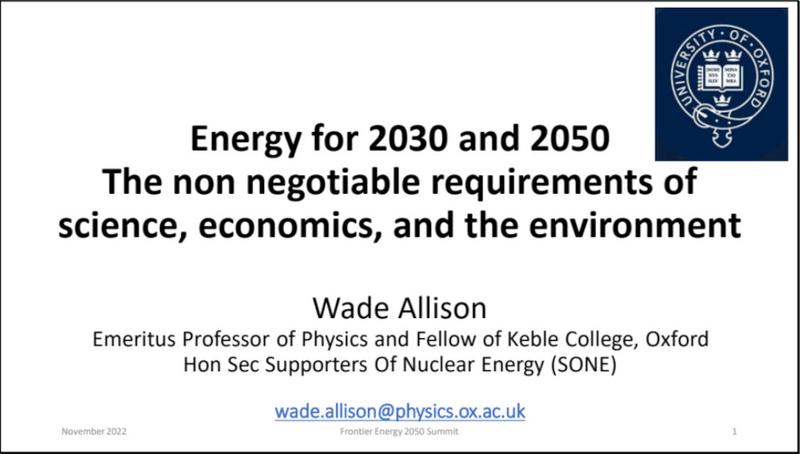
A major advance was food which gave animals, fish and birds mobility and flexibility in different seasons.
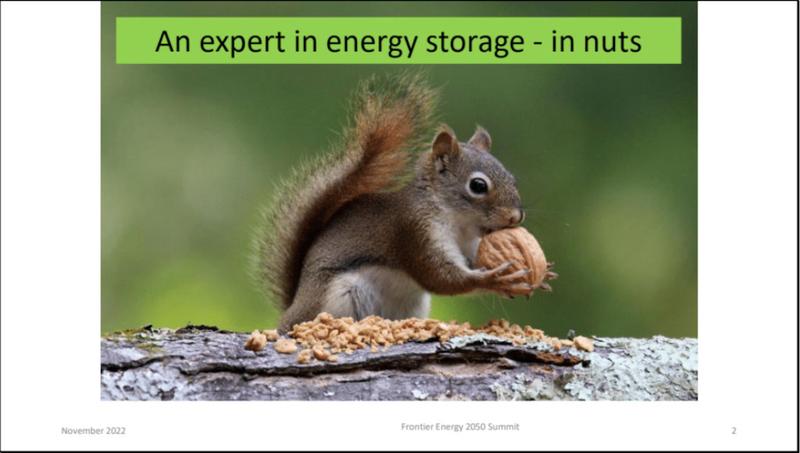
But it was the ability to burn energy outside the body that
distinguished humans from animals.
With large brains and the power of speech they also studied the falling
and moving materials around them and put them to work.
They coordinated teams of animals and slaves; they refined metals; they
built ships and sailed the seas; they tilled the land and harvested
crops.
Consequently, their living standard far exceeded that of other
creatures.
Yet life was short and miserable. Securing food and shelter left no time
for human rights, vacations, the arts, sport or leisure.
Directly or indirectly, their energy came only from daily sunshine,
which was both weak and notoriously fickle.
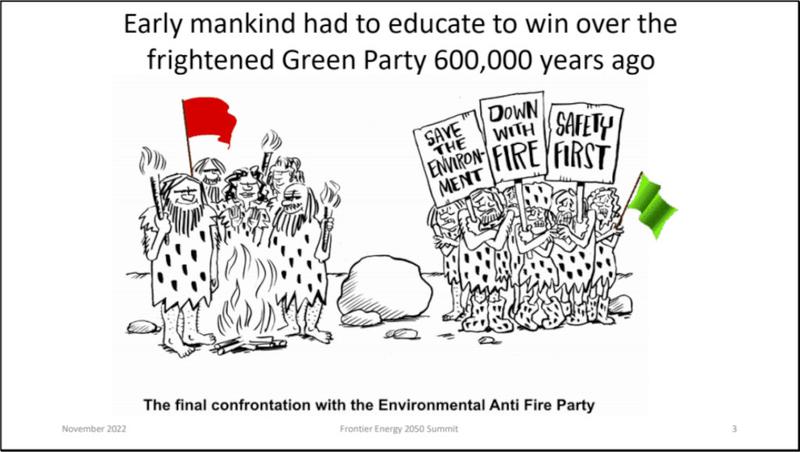
It was the fossil fuel powered engines of the Industrial Revolution that
overcame these unacceptable shortcomings.
Available 24/7 and with 10,000 times more energy, they transformed
life.
We can complete two columns of the Score card.
Calamitous entries are shown in red and transformative ones in green.
Today, the pollution and climatic effects of fossil fuels have made them
unacceptable.
What are the options?
Re-tool fossil fuels with Carbon Capture? That seems dangerously
speculative, given the scale required.
Go back to renewables? Wind, for example?
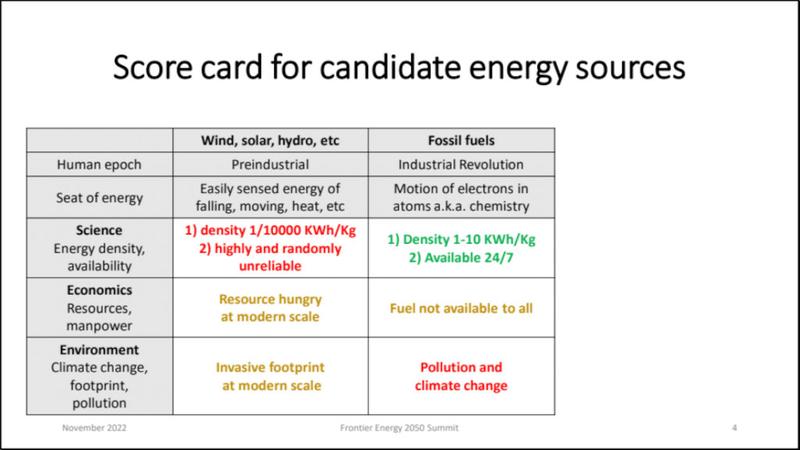
The technology to harvest wind is impressive, but, if there is none, the
investment stands idle.
This plot shows that the electricity generated daily in 2021 in
Europe+UK only reached half the installed capacity (red line) on one day.
Why was that?
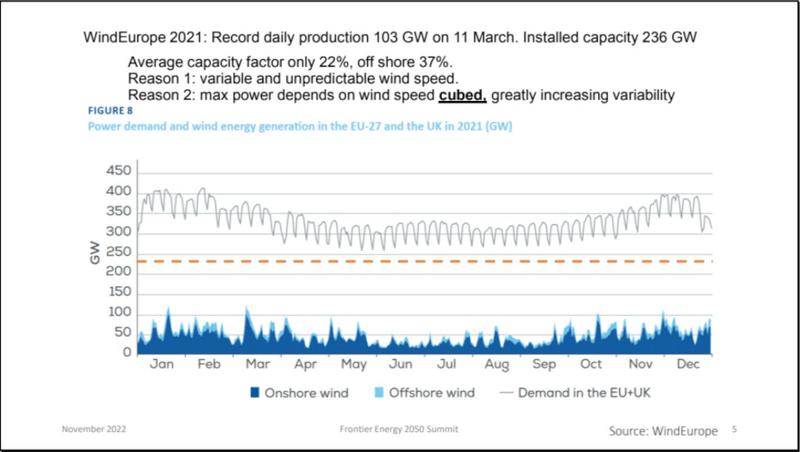
Simple physics shows the maximum power of wind depends on the windspeed
cubed
So, twelve percent, if the speed halves.
Eight times, if it doubles, endangering the turbine.
In March 2022 UK offshore wind fell for 8 days.
Relying on batteries would require 1000 of the largest ever built,
the 1.6GWhour battery at Moss Landing, California.
So, wind power fails, too weak and too intermittent.
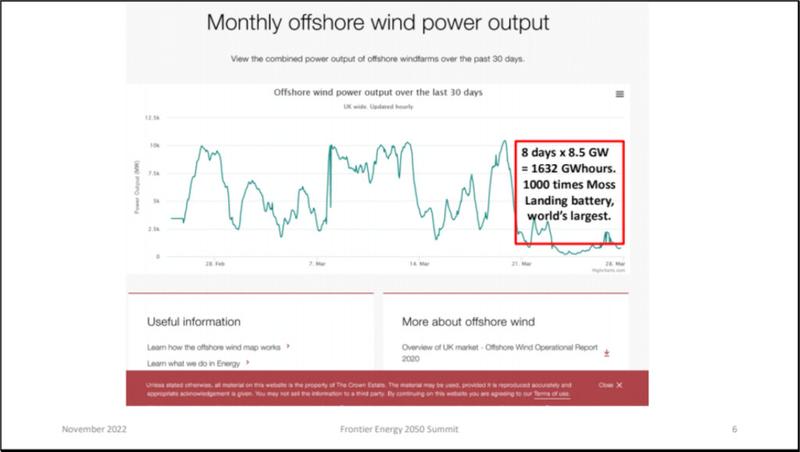
What about Solar? Its intermittency is only slightly better than wind?
Its low energy flux is least in winter and at higher latitudes.
So, a vast area is required at the expense of nature and the environment.
Here is a “meadow” near Abingdon, Oxford. This is not a “farm”, and not “green”.
Furthermore, like turbines and batteries, solar makes a high demand on
exotic minerals in short supply.
So, solar is not a viable primary source.
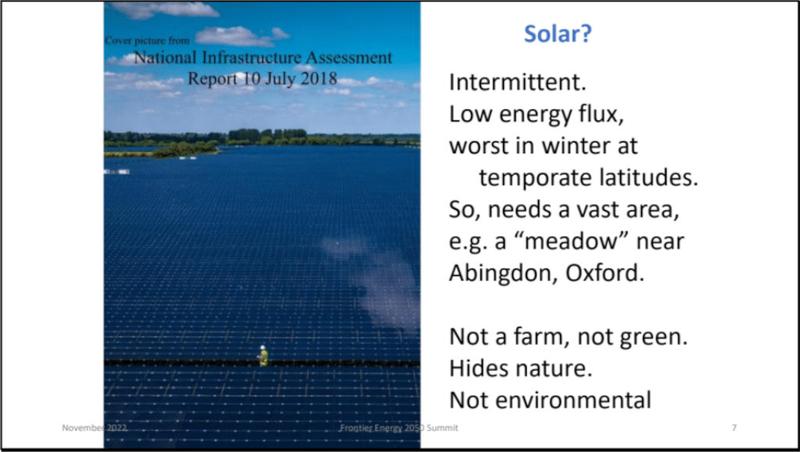
What other types of primary sources are known to science, and widely
available on Earth?
Secondary sources, like hydrogen and electricity, that need a primary
source themselves don’t count.
Nuclear is the only candidate.
This has all the advantages of fossil fuels but with a million times the
energy density, no emissions and the best safety record of any fuel.
One Kg of fuel can provide enough energy for one person for life, with
equally little waste.
It is ideal, but people know little about it and it has a horrific
reputation.
There was a ghastly error in the 1950s. What happened?
Can we correct it by 2030, ready for 2050?
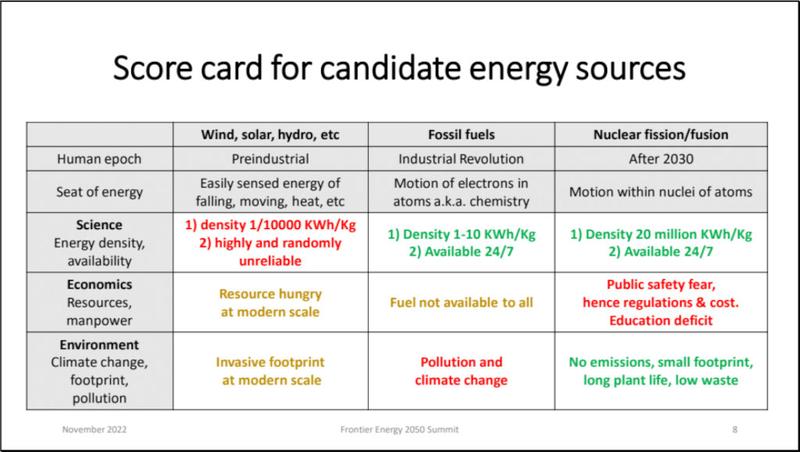
The safety of nuclear radiation has been studied for 125 years.
Marie Curie worked on it all her life.
High doses have been used to cure cancers for over 100 years.
In 1934 internationally evidence-based safety limits were agreed.
In 1945 nuclear bombs destroyed Hiroshima and Nagasaki, by blast and
fire like a huge chemical explosive but, as is now known, very few died
from radiation.
But in 1955, a time of spies, secrecy and public distrust, the world was
panicked by nuclear arms race.
Without any evidence the safety requirements for the public were
tightened 1000 times “as a precaution”.
That recommendation is backed by the United Nations and remains in force today.
- it brings no benefit;
- it is contradicted by science;
- it causes panic and extra deaths, e.g. at Fukushima.
In reactor technology the excessive regulation incurs
– over-design, – inflated costs, – delays, – bureaucracy.
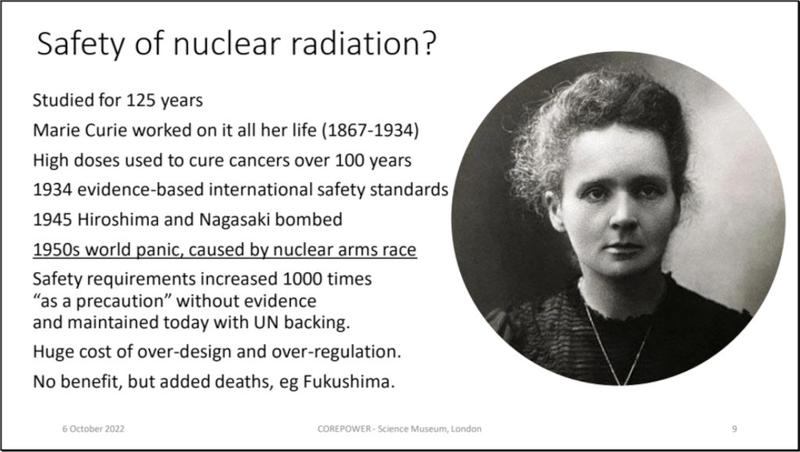
In contrast quite high doses of radiation are welcomed for personal
health.
Showing monthly doses as areas:
the red circle is fatal to a cancer;
the yellow, hair falls out and tissue is burnt, but usually recovery is
usual;
the green, no record of harm, as already accepted in 1934;
the white dot (also shown enlarged) the max recommended public dose,
post 1950s.
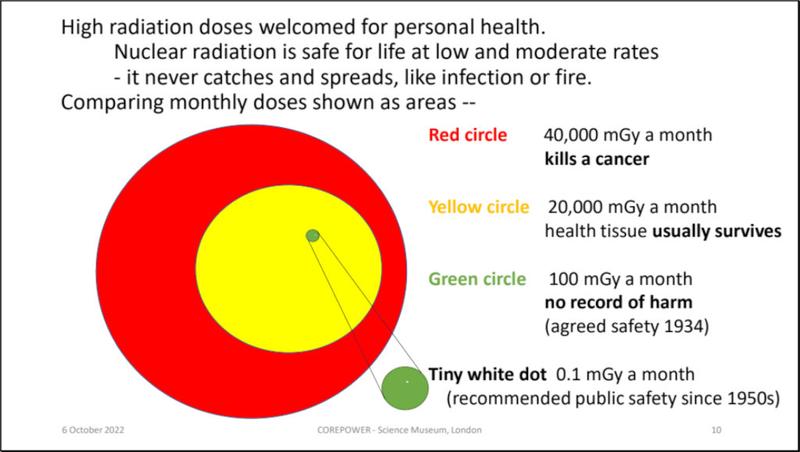
The evidence from personal health shows that the regulations applied
to nuclear energy dating from the 1950s are 1000x too cautious.
We cannot afford to treat ourselves so sensibly,
yet deny society the nuclear energy it needs to replace fossil fuels.
We have to teach the truth in schools, reassure society at large, and
reform the regulations as soon as possible, but that will take 20 years.
By 2050 we should be relying on nuclear alone as the source of primary energy.
